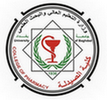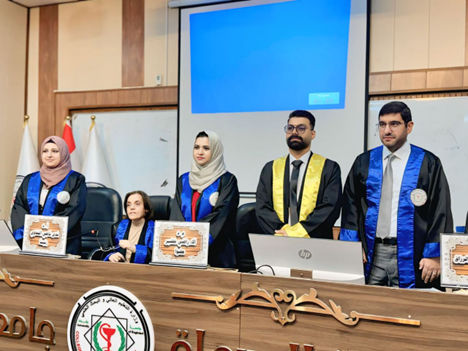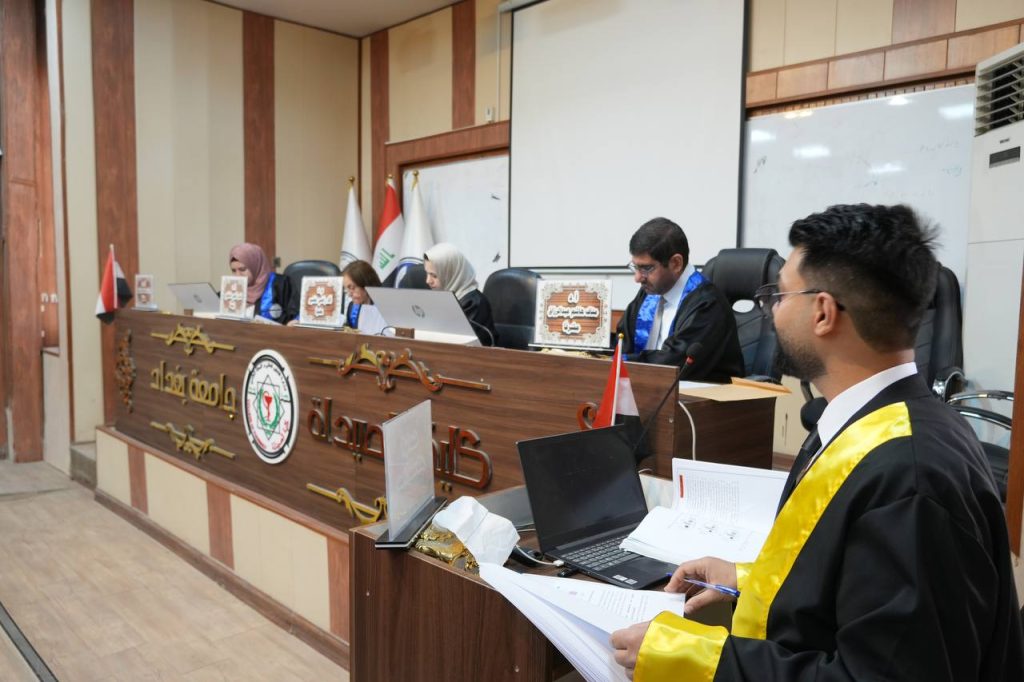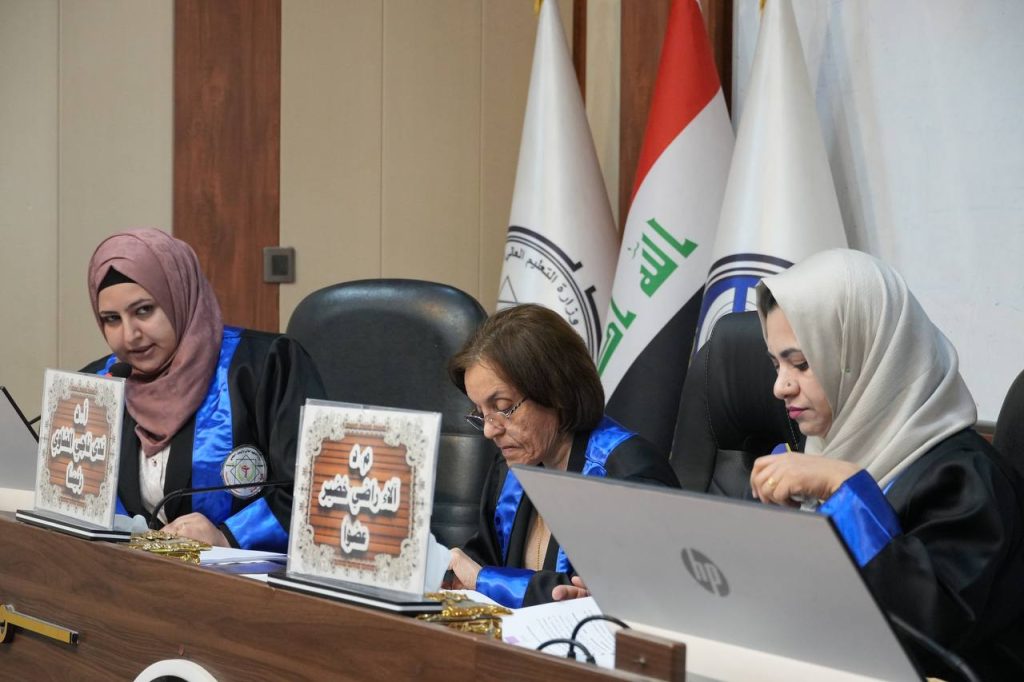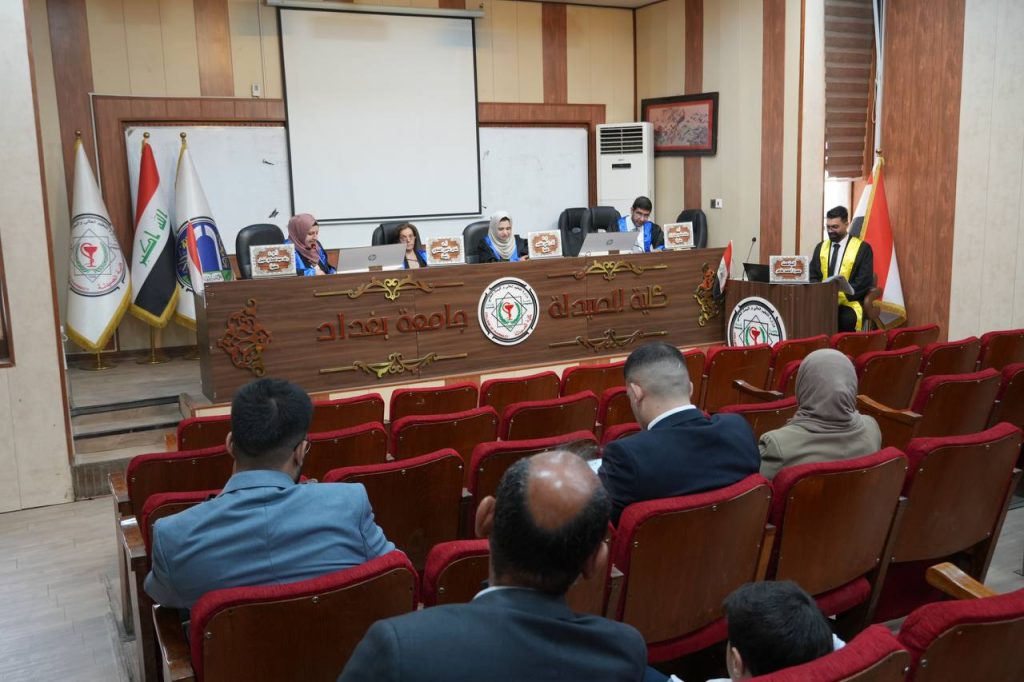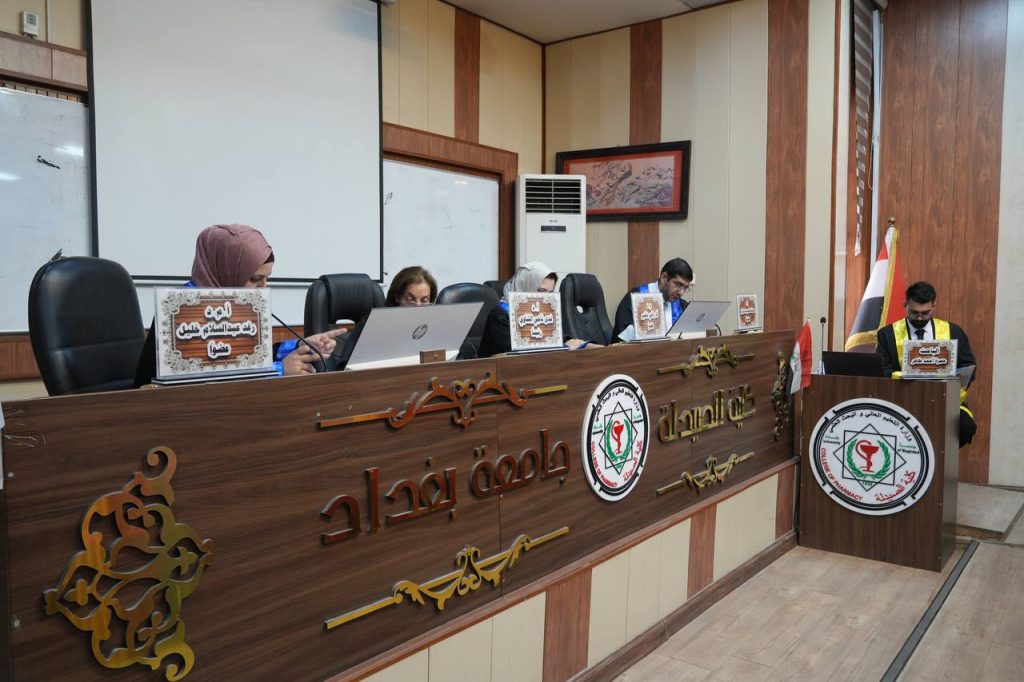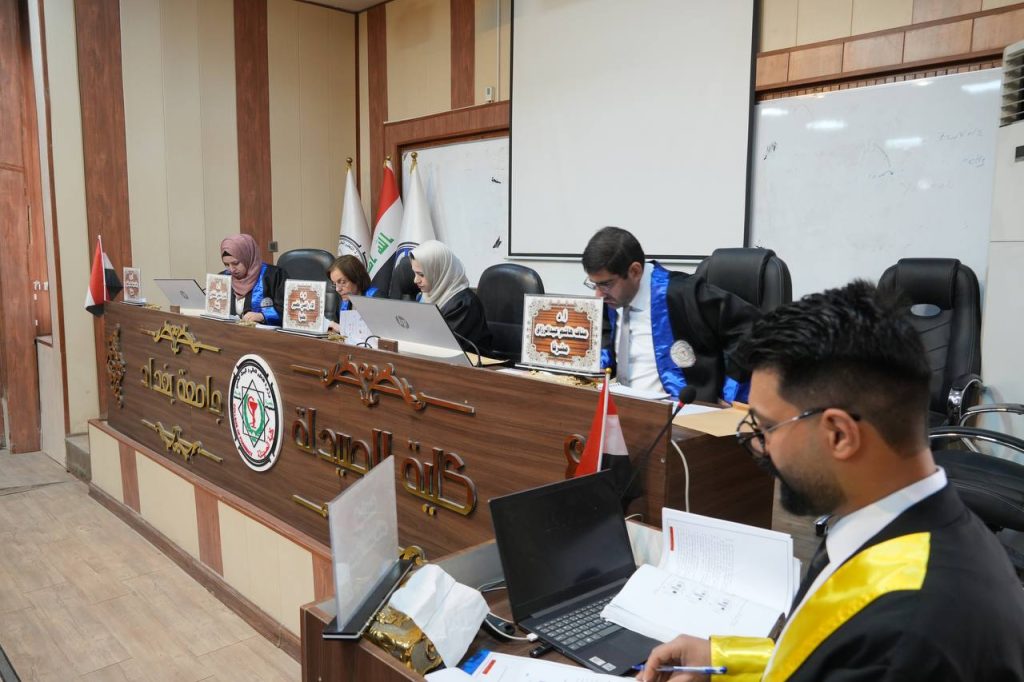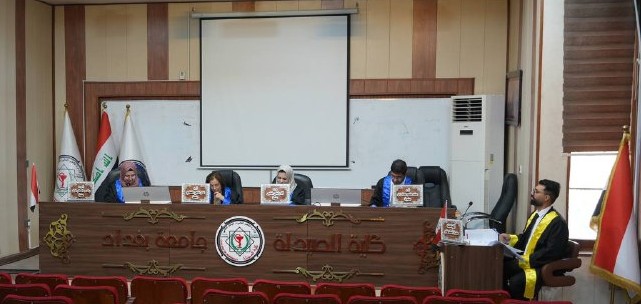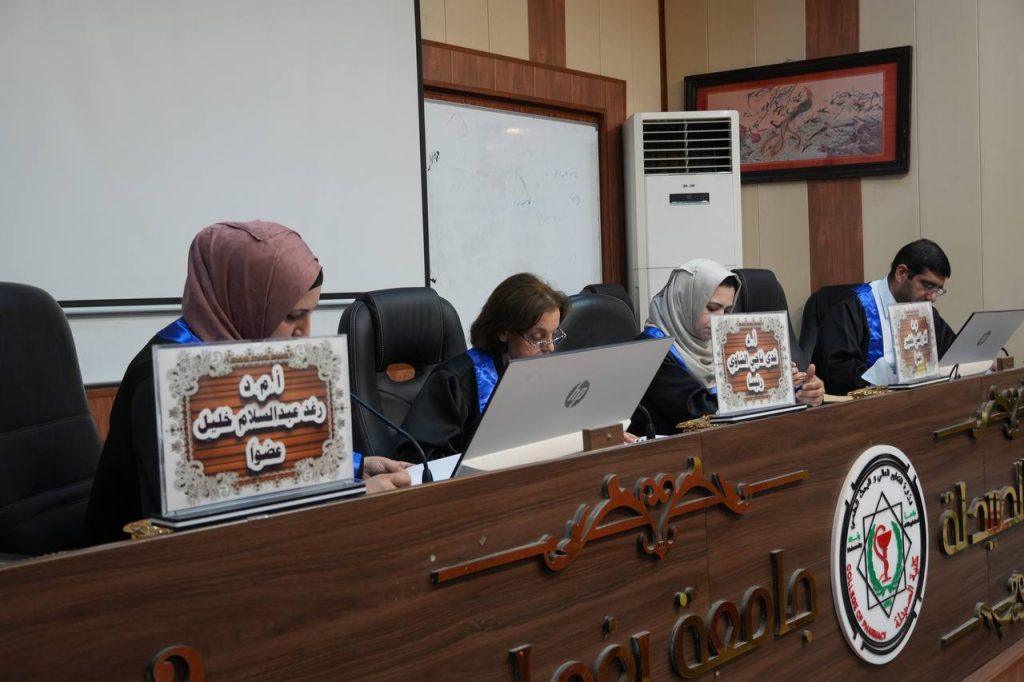The College of Pharmacy discussed the MSc thesis entitled “Evaluation of Protective of Ellagic Acid Against Alpha-Naphthyl Isothiocyanate-Induced Acute Cholestasis in Male Rats” by the student Hamza Ahmed Taher and the supervisor, Professor Dr. Munaf Hashim Zalzala, at the Pharmacology and Toxicology Department.The study aimed to investigate the regulatory roles of nuclear receptors in maintaining bile acid homeostasis and to evaluate the effects of varying doses of ellagic acid on liver injury, inflammatory responses, and bile acid disturbances. The study included forty male laboratory rats (n=40), which were randomly assigned to four experimental groups (n=10 per group) as follows: Control Group: Rats received an oral administration of 5% dimethyl sulfoxide (DMSO) for seven consecutive days and a single oral dose of corn oil (1 mg/kg) 48 hours before euthanasia (on day eight). Positive Control (ANIT) Group: Rats were administered a single oral dose of α-naphthyl isothiocyanate (ANIT) (100 mg/kg) 24 hours prior to euthanasia, in addition to receiving 5% DMSO daily for seven days. ANIT + Ellagic Acid (5 mg/kg) Group: Rats were treated with ellagic acid at an oral dose of 5 mg/kg/day for seven consecutive days. Twenty-four hours before euthanasia, they received a single oral dose of ANIT (100 mg/kg). ANIT + Ellagic Acid (10 mg/kg) Group: Rats were administered ellagic acid orally at a dose of 10 mg/kg/day for seven days, dissolved in 5% DMSO. Twenty-four hours before euthanasia, they were given a single oral dose of ANIT (100 mg/kg). The results showed that ellagic acid exerted significant hepatoprotective effects against ANIT-induced liver injury in a dose-dependent manner. Treatment with ellagic acid resulted in a marked reduction in liver enzyme levels, including alanine aminotransferase (ALT), aspartate aminotransferase (AST), alkaline phosphatase (ALP), gamma-glutamyl transferase (GGT), total bilirubin, and bile acids. Furthermore, the levels of pro-inflammatory cytokines, such as interleukin-1 beta (IL-1β) and tumor necrosis factor-alpha (TNF-α), were significantly decreased, indicating an attenuation of liver inflammation. Histopathological analysis further corroborated these findings, revealing a reduction in bile duct damage and inflammatory responses following ellagic acid administration. Additionally, ellagic acid treatment upregulated the expression of key regulatory proteins, including farnesoid X receptor (FXR), bile salt export pump (BSEP), and sodium taurocholate cotransporting polypeptide (NTCP), which are critical for bile acid transport and homeostasis. These results suggest that ellagic acid plays a vital role in preserving bile acid homeostasis and enhancing liver function. The study recommended further investigations into the therapeutic potential of other nuclear receptors and their antagonists to facilitate the development of novel treatment strategies for liver diseases, metabolic disorders, and related pathological conditions.

